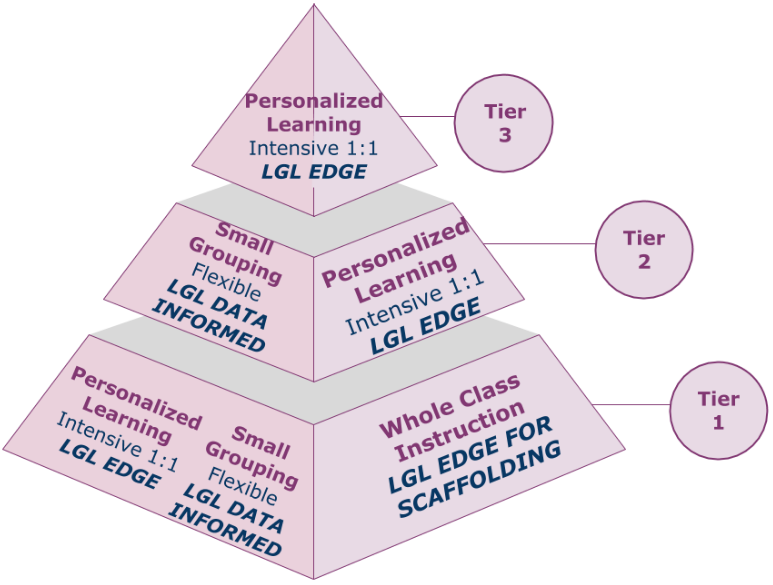What Is Progress Monitoring
Progress monitoring is an important part of assessing and tracking the development and growth of students in many areas in education. It involves regularly collecting and analyzing data to evaluate the effectiveness of an individual’s progress towards their goals. Progress monitoring helps to ensure that interventions or instructional strategies are working effectively and allows for adjustments to be made if necessary. By closely monitoring progress, educators can make informed decisions and adjustments to support the continued growth and development of the individuals they work with.
Goals of Progress Monitoring
For students with IEPs, progress monitoring is important in assessing the achievement of their individualized goals. These reports detail the student’s progress towards their IEP goals and provide valuable information for making instructional decisions and determining the need for any adjustments to the student’s educational plan.
For students who are not on IEPs, progress monitoring remains an important part of their development. Although these students may not have goals as formalized in an IEP, assessing their progress is important for personalized instruction to meet their needs. Regular progress monitoring helps educators target areas of strength and areas that may need support.
Informed Instructional Decisions & Student Achievement
Progress monitoring data from tools like Let’s Go Learn can provide valuable insights into student performance and growth in math and English. To make informed instructional decisions, educators can use this data to identify areas of strength and areas needing improvement for individual students or the entire class. This data can then be used to make adjustments needed to support student learning and success. If progress monitoring data shows that a group of students are struggling with a specific math concept, teachers can add targeted intervention strategies to address the specific needs. This might be re-teaching the concept using different instructional methods or providing additional practice and support. If progress monitoring data shows growth in an area, educators can celebrate those successes and continue to build on them.
Special Education & Individualized Educational Plans (IEPs)
Developing and implementing Individualized Education Plans (IEPs) in special education starts with identifying the needs of each student and creating specific goals, accommodations, and services to address those needs. The process is guided by legal requirements outlined in the Individuals with Disabilities Education Act (IDEA) and involves a collaborative effort from the IEP team, which usually is parents, teachers, special education professionals, and the students themselves. Progress monitoring is an important part of IEPs, because it allows for the ongoing assessment of a student’s development and the effectiveness of their individualized plan.
Response to Intervention (RTI)
Response to Intervention (RtI) is a systematic educational strategy used in schools to help identify struggling students and provide them with the necessary support to improve their academic performance. RtI is divided into three tiers of support. Tier 1 involves universal screening and high-quality classroom instruction for all students. Tier 2 provides targeted interventions for students who need additional support, and Tier 3 offers intensive individualized interventions for students who continue to struggle despite receiving Tier 1 and Tier 2 support.

Progress monitoring is an important part of RTI and involves regularly assessing students’ academic progress to determine the effectiveness of the interventions. If an intervention is not yielding positive results, other RtI strategies can be utilized, such as small group instruction, use of subject matter experts, or focusing on research-based instruction. The benefits of progress monitoring, when implemented correctly, include the ability to identify students who need extra support, evaluate the effectiveness of interventions, and make informed decisions about changes to other interventions or instructional strategies. Progress monitoring also allows for early intervention, preventing students from falling further behind and increasing the likelihood of success.
Multi-Tiered System of Support (MTSS)
MTSS is a proactive educational framework which outlines data-driven decision-making and problem-solving strategies to optimize instruction and academic achievement, including social, emotional and behavioral needs. Intervention plans are developed based on the specific needs of the students, and progress monitoring is used to assess their response to the interventions. Using high-quality, research-based interventions is important in making successful outcomes for students. These interventions are evidence-based and have been proven to be effective in supporting student learning and success. Progress monitoring allows educators to track the effectiveness of the interventions and make adjustments as needed to support student growth and achievement. The Let’s Go Learn platform generates detailed reports that show where students are excelling and where they need help. This helps teachers support each student better in Tiers 1, 2, and 3. With useful, detailed information, teachers can save time and be more effective by knowing when and with whom to use intervention strategies such as flexible grouping and providing personalized help. Reports in real-time let teachers easily change a student’s learning plan, create better IEPs, and share progress with others.


Leave A Comment